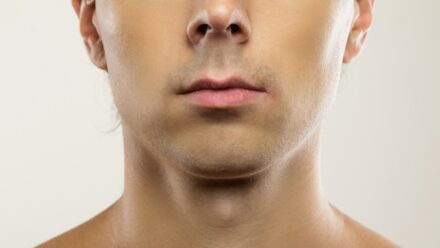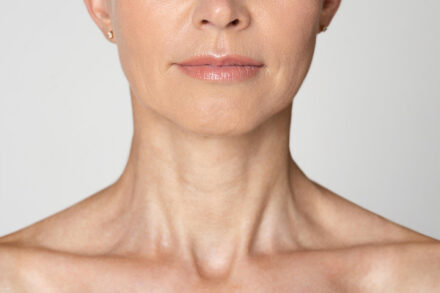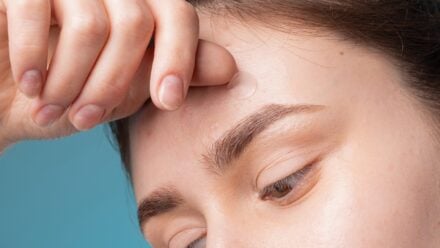David Beckham is one of the most popular English footballers out there. Along with his successful sports career, David Beckham is also famous as one of the most handsome and stylish British celebrities. As a global icon, David Beckham has always been in the spotlight for plastic surgery rumors. However, these rumors have never been confirmed by him. But one thing is for sure, plastic surgery or no plastic surgery, David Beckham just seems to get better-looking with time. However, his recent public appearances raised some eyebrows due to the subtle changes in his face. This blog will explore whether David Beckham’s changing appearance is due to plastic surgery or something completely different.

🏥 Did David Beckham Have Plastic Surgery?
If we compare David Beckham’s photos over the years, we can definitely see a gradual change in appearance. These changes can be easily attributed to natural aging. However, his latest appearances have left people scratching their heads as to why he looks so different. His most recent TV advertisement shows a completely different-looking David Beckham. Many are wondering why he looks so unrecognizable. His forehead looks much smoother, while his cheeks look a lot fuller than before. However, there are no obvious signs of plastic surgery. The changes in appearance seem more a result of non-invasive cosmetic procedures.

💉 Did David Beckham Get Botox?
David Beckham’s latest pictures show a considerable decrease in wrinkles in his face as well as a reduced appearance of crow’s feet. This could be a result of getting Botox in different areas of his face. To add to this, many speculate that he might have gotten a blepharoplasty as well, since people believe David Beckham’s eyes appear different and more open than before.
💉 Did David Beckham Get Dermal Fillers?
David Beckham’s mid-face has much more volume than before, and this fullness might be the result of dermal fillers. Dermal fillers are the greatest way to soften harsh lines and wrinkles on the face, and it seems like, from his recent photos, that he may have gotten dermal fillers to help restore the fullness in his face, especially the cheek area.
✨ Has David Beckham Gotten a Hair Transplant?
Comparing his photos from throughout his career, there does seem to be some thinning in the front and top of his head. He may have gotten some treatment for hair restoration. However, he has never confirmed whether he has gotten a hair transplant.
If he has had a hair transplant at all, it is likely a Follicular Unit Extraction or FUE transplant. The reasons why many speculate that he may have gotten an FUE transplant are due to the clear absence of any scarring on the back of his head.

🩺 Botox: How It’s Done and What It Does
“Botox” is a brand name that refers to an injectable form of Botulinum Toxin A, which is a neurotoxin. It is produced by a microorganism (bacteria) called Clostridium botulinum. In essence, in very small doses, this medication has a paralytic effect on muscles and is frequently used for aesthetic purposes and to treat some medical conditions.
The mechanism of action of Botulinum Toxin A revolves around muscle relaxation. Its works by:
- Inhibiting muscle contraction by blocking the nerve signals
- Relaxing the appearance of wrinkles
Wrinkles on the skin appear with age due to repeated contractions of certain muscles. Our muscles contract in response to a chemical (neurotransmitter) called Acetylcholine. To trigger a muscle contraction, nerves release this chemical at the nerve-muscle junction. Botox blocks the release of Acetylcholine, which in turn prevents muscle contractions and softens the appearance of wrinkles.
Apart from cosmetic procedures, Botox is also used for neurological issues (Blepharospasm, Hemifacial spasm, Cervical dystonia), pain disorders (Migraine headaches, TMJ disorders, Neuropathic pain), Autonomic Nervous System issues (Hyperhidrosis), and much more.
The effects of Botox are temporary and typically begin to decrease within 3 to 4 months. To maintain the cosmetic outcomes, regular reapplication is required.
How is Botox Done?
The Botox application process, in general, includes the following steps:
- Initial medical consultation and assessment to discuss procedure goals and injection points
- A detailed history and examination to rule out any contraindications to the procedure
- Preparation includes removing makeup (if any), cleaning the area with an antiseptic, and preparing the injection site
- The injection process follows a pre-determined plan and may last 4 to 10 minutes
- Most doctors require a follow-up visit to check the progress of the procedure in 12 – 14 days
🏥 Dermal Fillers: What Do They Do?
Dermal fillers are a common treatment to restore volume in the field of aesthetics. They are gel-like substances that fill hollow spaces under the skin to restore plumpness and youthful appearance. Common indications for the use of dermal fillers include volume loss due to aging, fluctuations in weight, and genetics. There are several different types of dermal fillers available, such as HA (Hyaluronic acid) fillers, Calcium Hydroxyapatite fillers, Poly-L-lactic acid fillers, and PMMA. All of these works by:
- Restoring volume loss in the hollows of the cheeks, under the eyes, and temples
- Softening fine lines and wrinkles
- Defining facial features like the jawline, cheekbones, etc.
- Reinvigorating skin texture through hydration and elasticity
- Restoring facial symmetry
The durability and longevity of fillers depend on the following factors:
- The type of the dermal filler
- The exact amount of the filler used
- Metabolism of the patient
- Post-treatment lifestyle choices
- Area where the filler is injected
Lip fillers usually dissolve much faster than other areas. Conversely, PMMA fillers last the longest, and Hyaluronic acid fillers last for 6 – 18 months approximately.
🏥 Get your consultation with the experts at the Estherian Clinic today!














